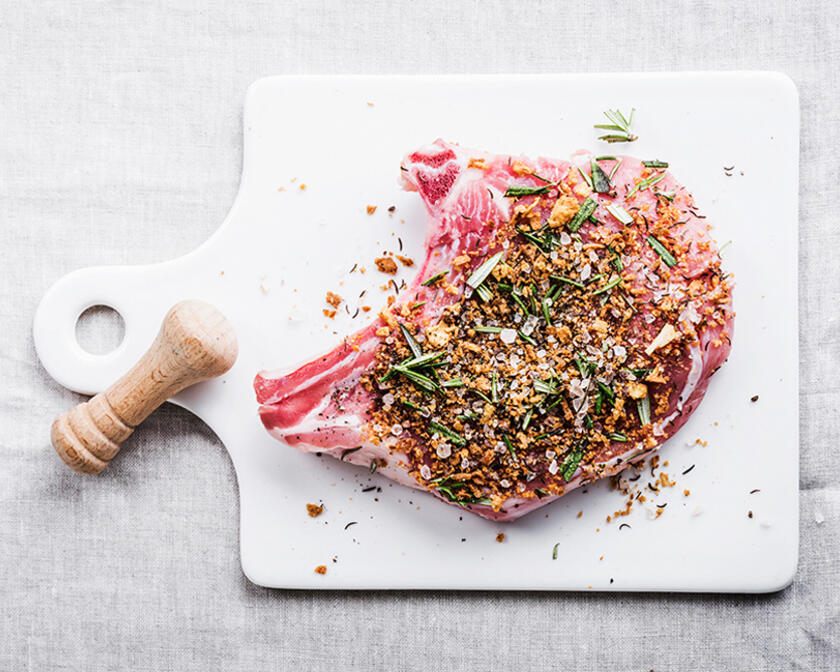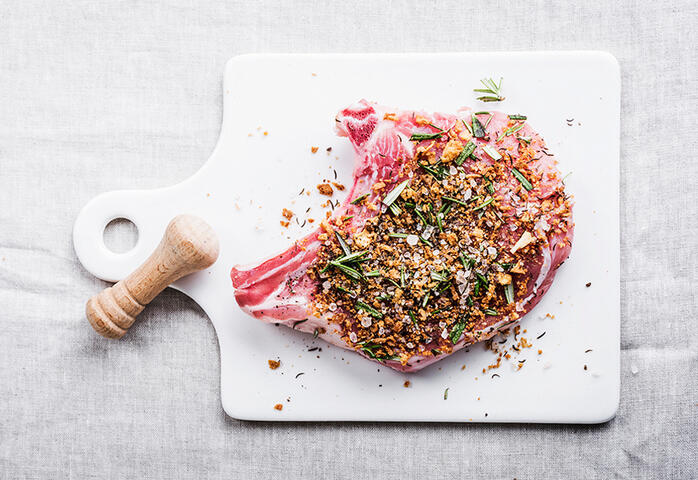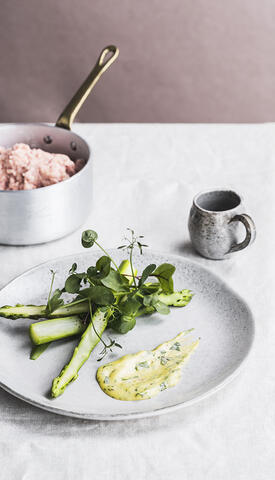
Did you know? Since time immemorial, 24 June also marks the last crop of Belgian asparagus. No asparagus are harvested after this date. The same is true for rhubarb. Both vegetables were not introduced into the Low Countries until the end of the fifteenth century.
Meat seasonings
I n the 15th century, herbs were mainly used for seasoning meat from young animals such as kid, lamb, chicken, suckling pig and veal (chops or cutlets). Pastrycooks were also able to make the most of ginger, saffron, cloves and cinnamon when preparing dishes such as cherry pie. At the time, it was rather unusual to garnish dishes with fresh green herbs, although medieval culinary manuscripts
sporadically state that watercress and oregano are used to give a touch of freshness to a dish. Nowadays, the feast of St John no longer plays a prominent role in our cuisine, even though midsummer night may still be traditionally celebrated with a bonfire and a festive barbecue with spices typical of (medieval) Ghent. Add a drink and the party.
Midsummer Night or St John’s Eve was one of the principal seasonal markers for medieval people. Who was Saint John and why was the longest day of the year, 24 June, named after him? John the Baptist was the patron saint of the church where the Ghent Altarpiece is located, although the building is now known as St Bavo’s Cathedral. The feast day of St John or Johnmas clearly has
its roots in Christianity since it celebrates the birth of John the Baptist on 24 June. On the other hand, traditions such as lighting a bonfire called Saint John’s Fire are also reminiscent of ancient rituals associated with the summer solstice. Furthermore, medieval people attributed magical properties to the herbs picked on midsummer night (the night of 23-24 June). For instance, bunches of freshly picked Saint John’s wort were hung by the front door or hearth to chase away the devil.
Get started
Old Ghent herb rub for veal chop

Ingredients for 4 servings:
- 30 g unrefined sugar (molasses, muscovado or brown sugar)
- 30 g onion (dried)
- 35 g cumin seed (toasted)
- 65 g coarse salt
- 25 g ginger powder
- Utensils: Mortar and pestle
- Finely grind the onion, cumin and ginger powder with a mortar and pestle, add sugar and salt.
- Sprinkle the meat with the mixture and leave the rub on the meat for 30 to 60 minutes.
- Remove any excess seasoning with a brush before frying or grilling the cutlet.
Rich herb sauce

Ingredients for 4 servings:
- 3 egg yolks
- 25 g water, beer, wine or stock
- 4 g lemon juice
- vinegar or gastrique
- 220 g (molten) lard
- pinch of salt and pepper
- Lightly beat the mixture on a medium heat.
- Bind with the molten lard.
- Flavour with salt and pepper.
- You can add some finely chopped fresh herbs: sorrel, watercress, mint, common marigold, chervil, coriander, dill, etc.